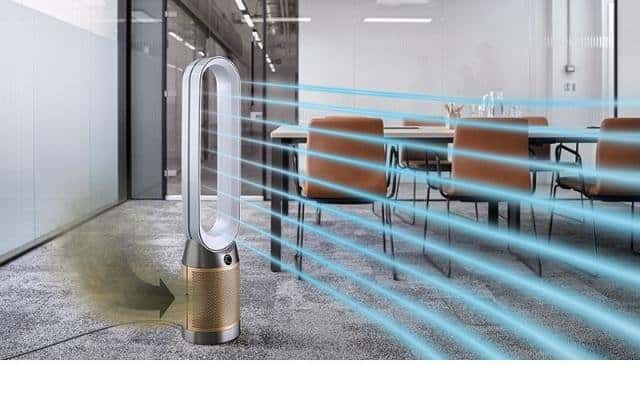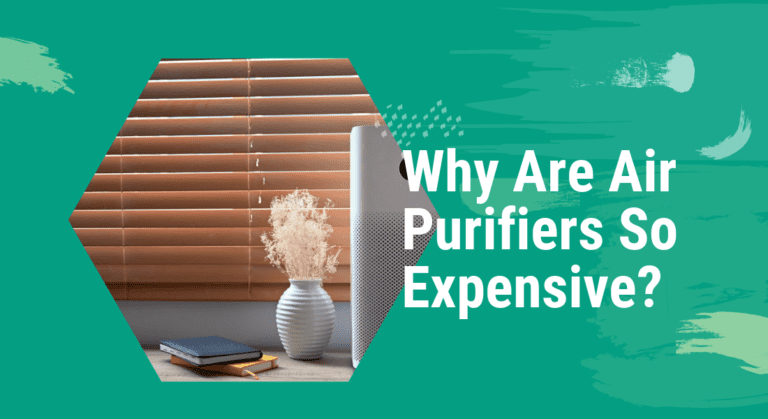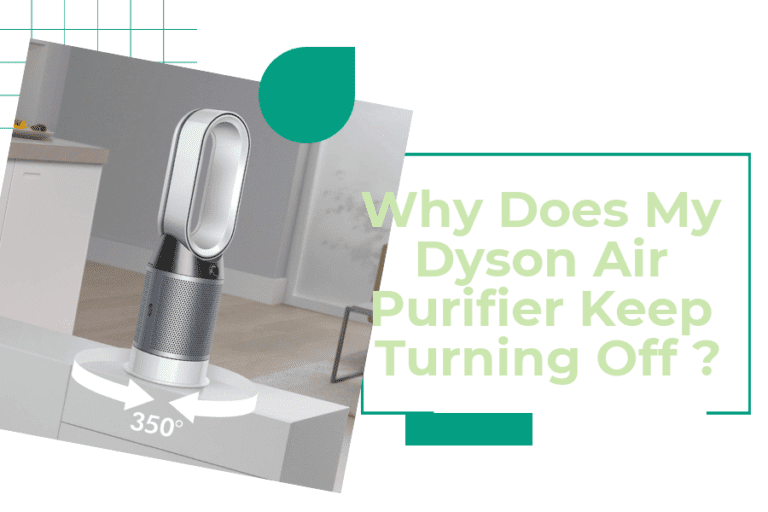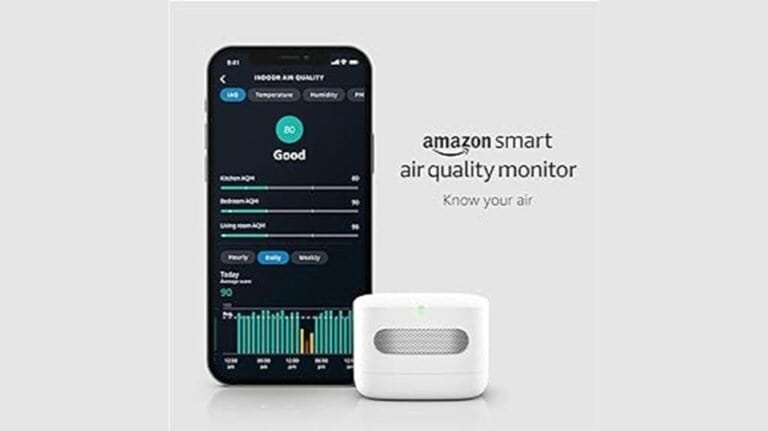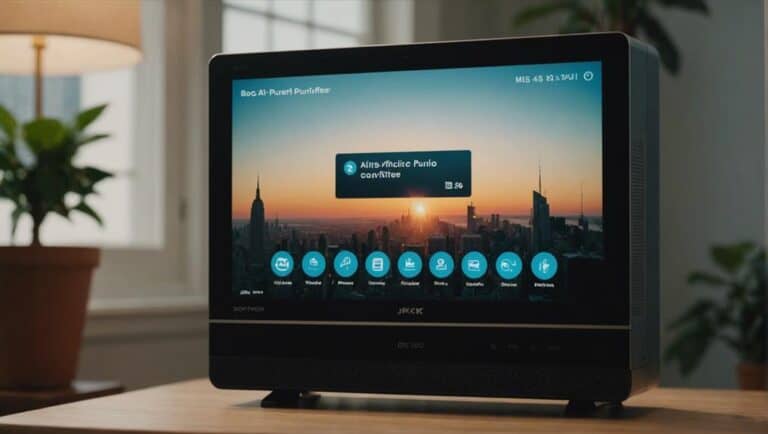Comparing Air Purifiers and Exhaust Fans: Which is the Ultimate Indoor Air Quality Solution?
In today’s fast-paced world, ensuring a healthy and clean living environment has become more important than ever. With the increasing concern for indoor air quality, many individuals are now seeking effective solutions to tackle pollutants and allergens that can potentially harm their well-being.
Two popular options in this regard are air purifiers and exhaust fans. While both aim to improve indoor air quality, they have distinct functionalities and advantages.
In this article, we will delve deeper into the topic of comparing air purifiers and exhaust fans to determine which one ultimately reigns supreme as the ultimate solution for achieving pristine indoor air quality.
Understanding Air Purifiers: How Do They Work and What Do They Filter?
Air purifiers are devices designed to improve indoor air quality by removing pollutants and contaminants from the air. These appliances work by pulling in air through a series of filters, trapping particles, allergens, and odors before releasing clean air back into the room. The filters used in air purifiers can vary but commonly include HEPA (high-efficiency particulate air) filters, activated carbon filters, or ionizers.
HEPA filters are highly effective at capturing tiny particles such as dust mites, pet dander, pollen, and mold spores. This makes them particularly beneficial for individuals with allergies or asthma. Activated carbon filters help eliminate odors and volatile organic compounds (VOCs) from sources like smoke or cooking fumes. Ionizers work by emitting charged ions that attach to airborne particles, causing them to clump together and fall out of the air.
While each type of filter has its strengths, many air purifiers combine different types for maximum effectiveness. It’s important to consider your specific needs when choosing an air purifier—whether it’s for allergy relief or general cleaning—and select one that best suits your requirements.
The Role of Exhaust Fans: How Do They Ventilate and Circulate Indoor Air?
Exhaust fans play a crucial role in improving indoor air quality by removing stale air, humidity, and odors from enclosed spaces. These fans work by creating negative pressure that draws out contaminated air and replaces it with fresh outdoor air.
- Removing Stale Air: Exhaust fans effectively evacuate stagnant air, which can be filled with pollutants such as carbon dioxide, dust particles, and smoke. By constantly circulating the air, they prevent it from becoming stagnant or stuffy.
- Eliminating Humidity: Another vital function of exhaust fans is to reduce excess moisture in the room. High humidity levels can lead to mold growth and contribute to respiratory problems. The fan’s operation helps maintain a balanced moisture level indoors.
- Odor Control: Cooking smells or unpleasant odors are no match for an exhaust fan. These fans quickly remove unwanted smells from kitchens, bathrooms, or any space prone to strong odors.
While powerful enough to make a significant impact on indoor air quality, it’s important to note that exhaust fans alone may not completely purify the air of allergens or microscopic airborne particles like an Air Purifier would. However, when used in conjunction with other ventilation methods or appliances like an Air Purifier, exhaust fans can undoubtedly enhance overall indoor air quality significantly.
Key Differences: Air Purifiers vs Exhaust Fans
- Functionality:
- Air purifiers are specifically designed to remove contaminants and improve air quality by trapping airborne particles like dust, pollen, pet dander, mold spores, and bacteria. They use filters or electrostatic technology to capture these pollutants.
- On the other hand, exhaust fans are primarily intended for ventilation purposes. Their main function is to expel stale air from a space and bring in fresh outdoor air by creating airflow. They do not actively filter out pollutants like an air purifier does.
- Types of Pollutants Removed:
- Air purifiers target a wide range of indoor pollutants including allergens, smoke particles, volatile organic compounds (VOCs), and odors. Some advanced models even eliminate viruses and germs with specialized filtration layers or UV light technologies.
- While exhaust fans don’t directly remove airborne pollutants like an air purifier does, they help reduce humidity levels which can prevent the growth of mold and mildew. Additionally, they can clear strong odors from cooking or bathrooms by extracting them outside.
- Coverage Area:
- The coverage area for most air purifiers ranges between a few hundred square feet up to several thousand square feet depending on the model’s capacity. This makes them ideal for targeting specific rooms or larger open spaces.
- In contrast, exhaust fans typically serve smaller areas such as individual rooms or enclosed spaces where ventilation is necessary due to limited natural airflow options
Effectiveness in Removing Pollutants: Comparing Air Purifiers and Exhaust Fans
Effectiveness in Removing Pollutants
When it comes to removing pollutants from indoor air, both air purifiers and exhaust fans can play a role.
- Air purifiers are specifically designed to capture and filter out contaminants such as dust, pollen, pet dander, mold spores, and even harmful gases like VOCs (volatile organic compounds). They use filters or technologies like HEPA (high-efficiency particulate air) filters or activated carbon filters to trap these pollutants and improve the quality of the air you breathe.
- Exhaust fans, on the other hand, are primarily used to remove stale or polluted air from a specific area by expelling it outside. While they can help with ventilating spaces that accumulate moisture or odors like bathrooms and kitchens, they may not be as effective at capturing tiny particles like allergens or filtering out harmful substances.
Ultimately, the effectiveness of either option will depend on your specific needs. If you’re concerned about removing small particles or pollutants present in your indoor environment for extended periods of time (such as allergens), investing in an air purifier is likely to yield better results. On the contrary, if your main focus is on quickly eliminating odors or excess moisture from targeted areas within your home without necessarily treating them centrally—exhaust fans might be more suited for those scenarios.
Energy Efficiency: Which Option Consumes Less Power?
When it comes to energy efficiency, exhaust fans are the frontrunners. They consume significantly less power compared to air purifiers. Exhaust fans are designed with the primary purpose of removing stale and polluted air from a space, while air purifiers actively work to filter and clean indoor air.
Exhaust fans typically have a lower wattage requirement, making them more energy-efficient in the long run. On average, an exhaust fan uses around 10-50 watts of power, depending on its size and speed settings. In contrast, most air purifiers range from 50-400 watts or even higher for larger spaces.
In terms of electricity consumption, exhaust fans have the upper hand over air purifiers when it comes to reducing your carbon footprint and keeping energy costs low. So if saving energy is one of your priorities while ensuring good indoor air quality, opting for an exhaust fan might be the better choice for you.
Noise Levels: Assessing the Sound Output of Air Purifiers and Exhaust Fans
Noise levels can play a significant role in choosing between air purifiers and exhaust fans. Excessive noise can cause annoyance, disrupt sleep, and hinder concentration. Comparing the sound output of these appliances is crucial for creating a peaceful indoor environment.
- Air purifiers: The noise produced by air purifiers varies depending on their size, type, and fan speed settings. While some models are designed to operate quietly with noise levels below 40 decibels (dB), others may emit sounds similar to a tabletop fan or light rainfall. It’s important to consider your tolerance for background noises when selecting an air purifier.
- Exhaust fans: Unlike air purifiers that primarily focus on clean air circulation, exhaust fans serve the specific purpose of removing odors and excess moisture from indoor spaces like bathrooms or kitchens. These fans tend to produce more noticeable sounds due to their higher airflow capacity but are often equipped with features such as variable speed settings or insulated housings that help minimize noise disruption.
By carefully evaluating the noise levels generated by both air purifiers and exhaust fans, you can choose an appliance that suits your sound preference without compromising its performance in improving indoor air quality.
Cost Considerations: Analyzing the Long-Term Investment
Initial costs
When comparing air purifiers and exhaust fans, it’s important to consider their initial costs. Air purifiers tend to have a higher upfront investment compared to exhaust fans. This is because air purifiers use advanced filtration technology to remove particles from the air, while exhaust fans simply expel stale air out of the room. However, it’s worth noting that some models of air purifiers can be more affordable than others, so it’s essential to research and compare prices before making a decision.
Energy consumption
Another cost consideration is energy consumption. Generally, exhaust fans consume less energy than air purifiers due to their straightforward function of drawing in fresh air or expelling stale air. On the other hand, certain types of air purifiers may require more electricity for operating various filtration systems and settings. Thus, when evaluating long-term investment costs, understanding the ongoing energy usage will be beneficial in determining which option suits your budget best.
Maintenance expenses
Maintenance expenses also play a role in long-term cost considerations for both options. Exhaust fans typically have fewer components and therefore require minimal maintenance besides occasional cleaning. In contrast, air purifiers often have replaceable filters that need regular changes; these replacements can add up over time as an additional expense alongside general upkeep requirements such as dusting or cleaning internal parts. Prioritize assessing whether you are willing and able to invest time and effort into properly maintaining your chosen system before settling on either an exhaust fan or an air purifier solution.
Choosing the Ultimate Indoor Air Quality Solution: Factors to Consider
Factors to Consider for Choosing the Ultimate Indoor Air Quality Solution
When deciding between air purifiers and exhaust fans, several factors should be taken into consideration:
- Effectiveness: Assess the efficacy of both options in removing pollutants from your indoor environment. Look for air purifiers with high-efficiency particulate air (HEPA) filters that can capture even microscopic particles. Alternatively, exhaust fans should have sufficient airflow rates to eliminate odors and moisture effectively.
- Noise level: Evaluate how much noise each option produces during operation. Opt for an air purifier or exhaust fan that operates quietly, especially if you plan on using it in a bedroom or living area where excessive noise could disrupt sleep or conversations.
- Installation requirements: Consider whether installing an air purifier or exhaust fan is feasible within your space limitations. Some models may require professional installation, while others can simply be placed on a tabletop or mounted on a wall without any special tools.
Overall, weighing these factors will help determine which type of indoor air quality solution suits your needs best – whether it’s an efficient and quiet air purifier with HEPA filtration capabilities or a powerful yet easy-to-install exhaust fan capable of ventilating larger areas effectively.

